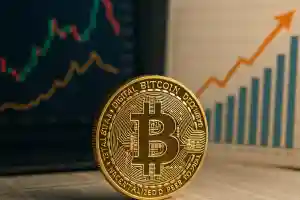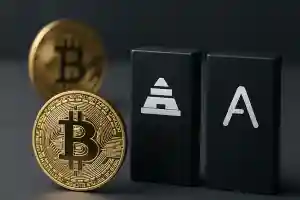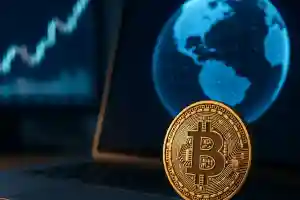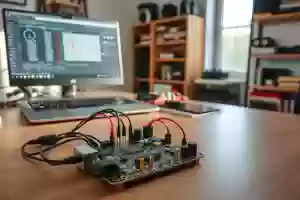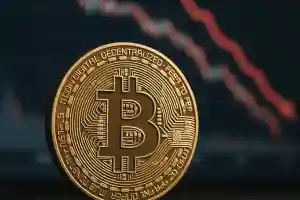Unlock the Power of Digital Assets
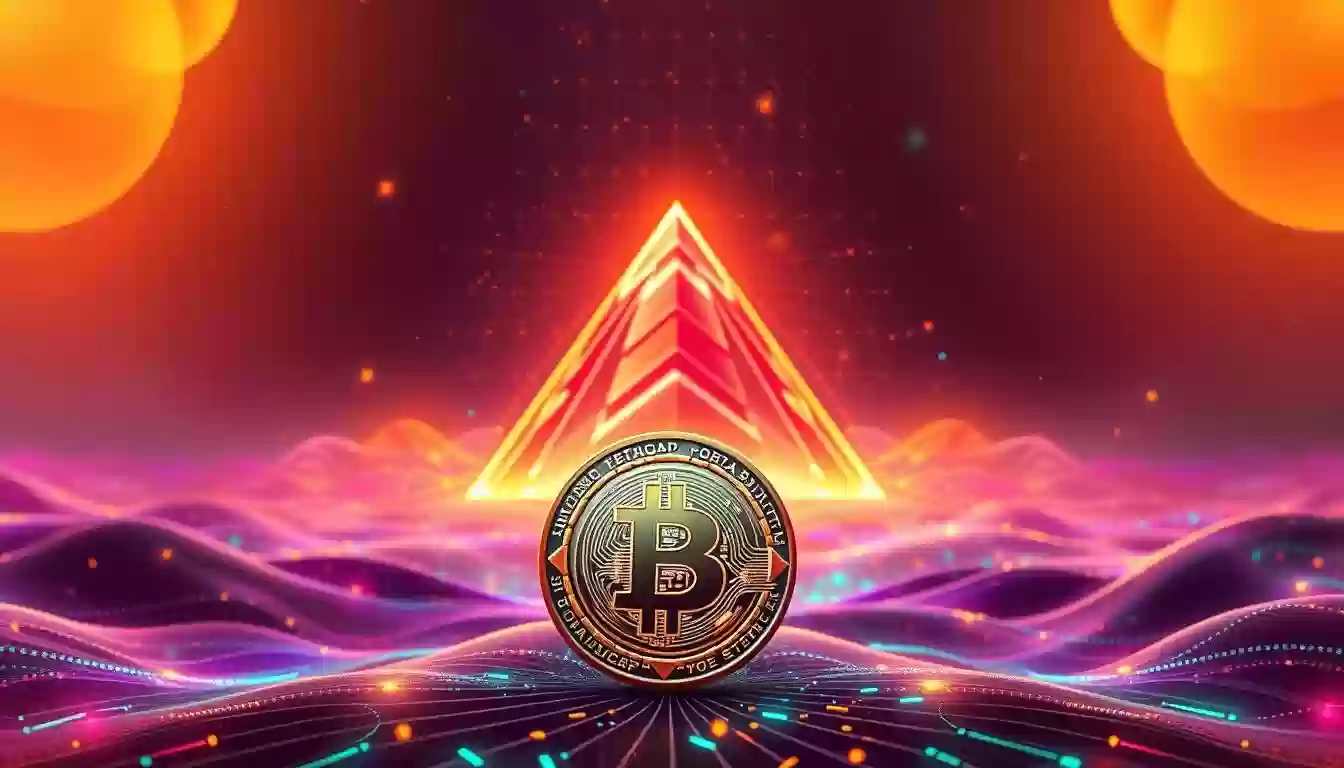 10 Mar 25
10 Mar 25
Digital assets have revolutionized the financial landscape, offering a new era of investment opportunities. Cryptocurrency, led by Bitcoin, introduced the first decentralized system, eliminating the need for central authority. This innovation relies on blockchain technology, ensuring secure and transparent transactions.
Since Bitcoin's inception, the market has expanded, giving rise to altcoins like Ethereum, XRP, Solana, and Cardano. These digital currencies provide diverse functionalities, from smart contracts to enhanced scalability. Understanding this evolving space empowers users to make informed decisions, whether investing or using crypto for everyday transactions.
This guide aims to navigate the world of crypto, offering clear steps to understand, invest, and securely use digital currencies. Whether you're a novice or looking to expand your knowledge, this resource will provide the insights needed to thrive in the digital economy.
Introduction to Cryptocurrency
Cryptocurrency is a digital currency designed to work through a computer network that is not reliant on any central authority. Unlike traditional currencies, it uses advanced cryptography to secure and verify transactions. Cryptocurencie operates on decentralized networks, meaning no single entity controls it.
Bitcoin, introduced in 2009, was the first cryptocurrency. It revolutionized finance by eliminating the need for intermediaries. Today, Bitcoin is followed by many others, each offering unique features. Transactions on these networks are recorded on a blockchain, ensuring transparency and security.
Each transaction is verified by network participants, called miners, through complex computations. This process, known as mining, secures the network and adds new units to circulation. The decentralized nature of cryptocurencie makes it resistant to censorship and fraud, offering a reliable method for transferring value globally.
Understanding Digital Assets and Blockchain Technology
Digital assets are transforming the modern economy by offering a secure and efficient way to store and transfer value. These assets, such as Bitcoin and Ethereum, rely on blockchain technology to operate. Blockchain acts as a digital ledger, recording transactions in a way that is both transparent and tamper-proof.
Blockchain technology ensures the integrity of these records through advanced cryptography. Each transaction is grouped into a block, which is then linked to the previous block through a unique hash function. This creates an unalterable chain of records, making it nearly impossible to manipulate or alter past transactions.
The process of validating transactions on the blockchain is known as consensus. This can be achieved through methods like proof-of-work or proof-of-stake. Proof-of-work, used by Bitcoin, requires significant computational power to solve complex mathematical problems. Proof-of-stake, employed by Ethereum, relies on validators "staking" their own assets to secure the network. Both methods ensure that transactions are verified securely and efficiently.
Decentralized exchanges (DEXs) play a crucial role in the trade of digital assets. These platforms allow users to buy and sell digital currencies directly without intermediaries, enhancing accessibility and reducing costs. By leveraging blockchain technology, DEXs provide a secure and transparent environment for transactions.
Blockchain's impact extends beyond digital currencies. It has the potential to revolutionize industries such as supply chain management, healthcare, and finance by providing a secure and transparent way to track and verify data. As the technology continues to evolve, its applications are expected to expand, driving further innovation and adoption.
How Cryptocurrency Works: A Simplified Overview
Digital currencies like Bitcoin and Ethereum are transforming how we think about money and assets. They operate in a vast digital market, where transactions happen without traditional banks. This decentralized system relies on blockchain technology, a digital ledger that records every transaction securely.
Miners play a crucial role by solving complex puzzles to validate transactions, ensuring the network's security. Wallets are where users store their digital currencies, and exchanges are platforms where they can buy, sell, or trade these assets. Each transaction is verified through a process called consensus, making fraud nearly impossible.
Market volatility is a key factor in the value of digital currencies. Unlike traditional assets, their prices can fluctuate rapidly, influenced by investor sentiment and economic indicators. Despite this volatility, digital currencies offer a new way to transfer value globally, combining the features of both money and assets.
Setting Up Your Crypto Wallet
Your crypto wallet is essential for managing digital assets securely. It stores your private keys, enabling transactions and asset control. Think of it as a digital bank account but with enhanced security features.
Choosing the Right Wallet
With so many options, selecting the right wallet can be daunting. Hardware wallets, like Ledger or Trezor, offer top-tier security by storing keys offline. They’re ideal for large investments. For daily transactions, software wallets like MetaMask or Coinbase are user-friendly and accessible on mobile or desktop. Paper wallets provide an offline solution but require careful handling to avoid loss or theft.
Securing Your Private Keys
Private keys are crucial for asset access. Never share them publicly. Use biometric authentication and two-factor authentication for added security. Regularly update your wallet software to protect against vulnerabilities. Remember, losing your seed phrase means losing your assets, store it securely.
Investing in a reliable wallet is a smart move. Whether you prefer hardware, software, or paper, the key is to choose one that fits your needs and ensures your assets are safe.
Mastering Cryptocurrency Transactions
Understanding how transactions work is key to navigating the world of digital assets. Each transaction involves sending digital currencies from one wallet to another, recorded on a blockchain. This process is secure, transparent, and efficient.
Transaction fees play a crucial role in this system. These fees incentivize miners to validate transactions, ensuring the network's security. The fee amount varies based on network congestion and transaction size.
Mining is the backbone of transaction validation. Miners solve complex puzzles to add transactions to the blockchain, preventing fraud and ensuring integrity. This process is energy-intensive but vital for network security.
Companies structure fees differently, offering tools to optimize transactions. For instance, timing transactions during low network activity can minimize costs. Using platforms that analyze fee structures helps users make informed decisions.
Learn more about cryptocurrency transaction monitoring to gain insights into managing your transactions effectively.
Effective Cryptocurrency Investment Strategies
Investing in digital assets requires a strategic approach to navigate the market's volatility and unlock potential gains. Unlike traditional banking, where investments are centralized and regulated, digital assets offer a decentralized network that operates independently of any central authority. This decentralized model provides unique opportunities for growth and diversification.
When considering investment strategies, it's important to assess risk tolerance and adopt a diversified portfolio. This can include a mix of established assets like Bitcoin and Ethereum, as well as newer altcoins. Diversification helps mitigate risks associated with market fluctuations. Additionally, techniques such as dollar-cost averaging can reduce the impact of short-term volatility by investing fixed amounts at regular intervals.
Decentralized networks play a pivotal role in enabling secure and transparent transactions. These networks are maintained by participants rather than a central authority, ensuring resilience against censorship and fraud. Platforms like Coinbase and Binance provide user-friendly interfaces for executing trades and managing investments. By leveraging these tools, investors can make informed decisions and optimize their strategies.
Ultimately, a well-rounded investment approach involves balancing risk and reward. By staying informed about market trends and utilizing robust platforms, investors can effectively navigate the digital asset landscape and achieve their financial goals.
Navigating the Cryptocurrency Market
Understanding the cryptocurrency market can feel complex, but with the right tools and knowledge, anyone can navigate it confidently. The market operates 24/7, with prices influenced by factors like investor sentiment, regulatory changes, and technological advancements. Individuals play a crucial role in shaping trends, as their buying and selling activities directly impact market dynamics.
Reliable services, such as secure wallet applications, are essential for participation. These tools help users manage their assets safely and efficiently. Leading platforms provide insights and data, enabling informed decisions. For instance, many services offer real-time market analysis and portfolio tracking features.
Current trends highlight the importance of diversification and risk management. Persons new to the market should start with small investments and use strategies like stop-loss orders to protect their capital. Combining market analysis with secure wallet management is key to navigating this dynamic landscape.
By staying informed and using trusted services, anyone can confidently engage with the cryptocurrency market, making it accessible to all.
Utilizing Cryptocurrency Exchanges
Cryptocurrency exchanges are platforms where users can buy, sell, or trade digital assets. These exchanges act as intermediaries, connecting buyers and sellers to facilitate transactions. They are essential for the trading ecosystem, enabling liquidity and accessibility to a wide range of digital currencies.
Digital ledgers, such as blockchain, play a crucial role in securing transactions. Each trade is recorded on a decentralized ledger, ensuring transparency and preventing fraud. This technology allows users to track their investments in real-time, providing a secure and reliable way to manage their assets.
When using an exchange, users typically create an account, deposit funds, and then execute trades. The process is streamlined, with most platforms offering user-friendly interfaces. However, it's important to choose a reputable exchange to ensure your investments are secure.
Comparing exchanges can help you find the best fit. For example, Coinbase is known for its ease of use, while Kraken offers advanced trading features. Gemini, on the other hand, emphasizes security and compliance. Each exchange has its own strengths, so it's worth exploring to find one that aligns with your investment goals.
When selecting an exchange, consider factors such as fees, security, and available assets. Look for platforms with strong security measures, such as two-factor authentication and cold storage for assets. Additionally, check the fees associated with buying, selling, and withdrawing funds.
Creating a secure and effective investment strategy involves diversification and risk management. Consider spreading your investments across different assets and setting stop-loss orders to protect your capital. By leveraging the tools and features offered by exchanges, you can make informed decisions and optimize your investment approach.
Ultimately, cryptocurrency exchanges provide a gateway to the world of digital assets. By understanding how they work and choosing the right platform, you can confidently navigate the market and achieve your financial objectives.
Step-by-Step Guide to Mining and Hashing
Mining is the backbone of digital asset networks, enabling secure and transparent transactions. It involves solving complex mathematical puzzles to validate transactions and add them to a blockchain. This process requires significant computational power and energy, making it both resource-intensive and rewarding.
Understanding Mining Hardware
The hardware used for mining has evolved significantly. Early miners used CPUs, but GPUs and specialized ASICs (Application-Specific Integrated Circuits) now dominate. ASICs, like the Bitmain Antminer S21 Pro, offer higher efficiency and hashing power, making them the preferred choice for large-scale operations. These devices are designed specifically for mining, providing better performance and energy efficiency compared to general-purpose hardware.
Proof-of-Work vs Proof-of-Stake
Proof-of-work (PoW) and proof-of-stake (PoS) are two consensus mechanisms used to secure networks. PoW, used by Bitcoin, requires miners to solve complex puzzles, consuming significant energy. PoS, used by Ethereum, relies on validators staking their own assets to secure the network. While PoW is more secure due to its energy requirements, PoS is more energy-efficient, making it a growing alternative.
Energy Considerations
Mining's energy consumption has sparked global debate. The Cambridge Bitcoin Electricity Consumption Index estimates Bitcoin's annual consumption at around 121 TWh, comparable to small nations. Governments worldwide are responding with regulations. For instance, Russia has legalized mining, imposing taxes and restrictions to balance economic benefits with environmental concerns. Miners are increasingly turning to renewable energy sources to reduce their environmental impact.
Hashing Techniques and Security
Hashing is crucial for network security. Algorithms like SHA-256 produce fixed-size outputs, enabling secure transaction verification. Miners compete to find a valid hash, ensuring the network's integrity. This process prevents fraud and ensures all transactions are legitimate, maintaining trust in the system.
Practical Tips for Miners
Starting mining involves choosing the right hardware, considering electricity costs, and selecting a mining pool for support. Researching regulations in your region is essential to ensure compliance. As the digital asset landscape evolves, staying informed about technological advancements and market trends is key to success.
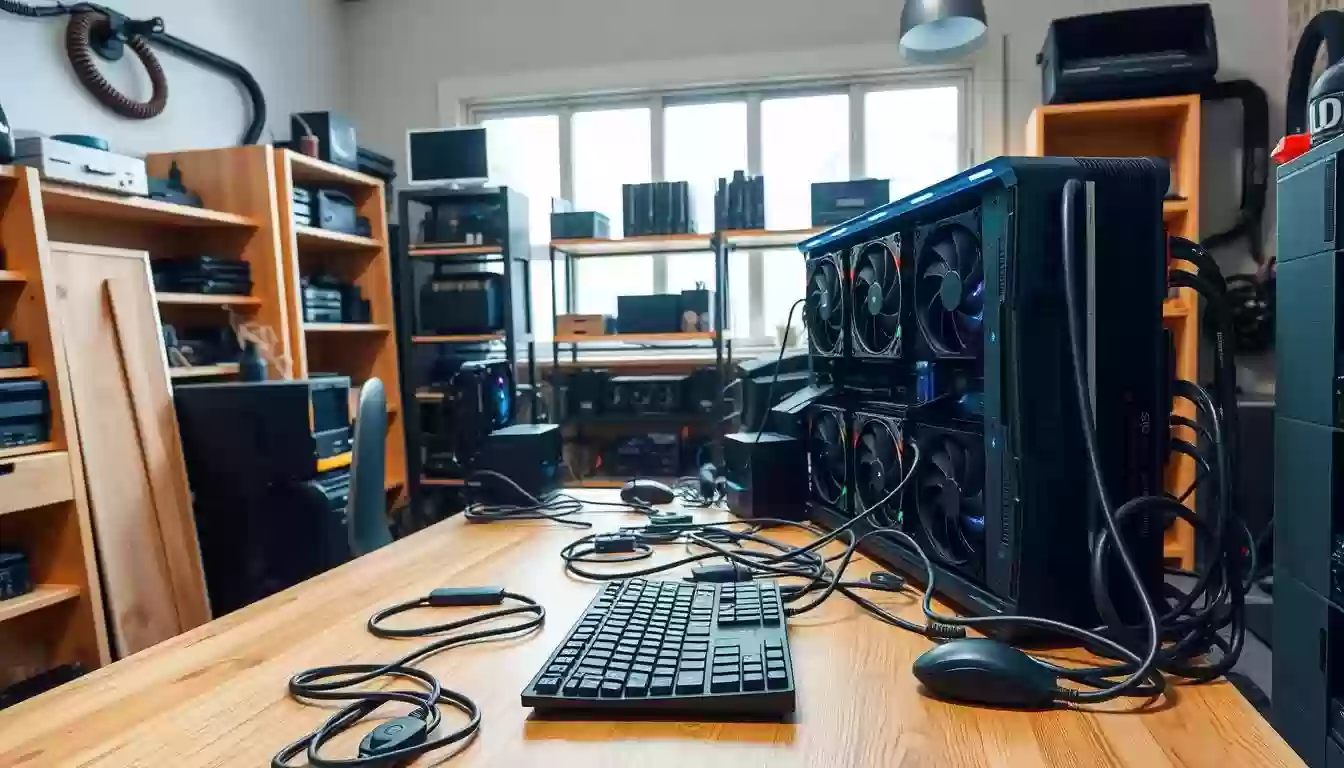
By understanding mining and hashing, individuals can appreciate the complexity and security behind digital assets, empowering them to participate confidently in this evolving space.
Implementing Robust Security Measures
Protecting your digital assets is crucial in today's fast-evolving financial landscape. A well-secured account is your first line of defense against potential threats. Let’s explore essential strategies to safeguard your investments.
Secure key management is paramount. Your private keys are the gateway to your assets. For example, consider using hardware wallets like Ledger or Trezor, which store keys offline, reducing hacking risks. Regularly updating your wallet software is another critical step to protect against vulnerabilities.
Multi-factor authentication adds an extra layer of security. Enable 2FA on your accounts to prevent unauthorized access. Encryption practices should also be a priority. Use encrypted communication channels and ensure your wallet apps are encrypted to protect sensitive information.
Specialized security software can enhance your protection. For instance, anti-malware programs and browser extensions can block phishing attempts. These tools act as an additional barrier, safeguarding your assets from sophisticated attacks.
Real-world examples highlight the importance of these measures. Many users have secured their accounts by adopting these practices, significantly reducing the risk of breaches. By implementing these strategies, you build long-term trust in your digital asset management.
Avoiding Crypto Scams and Fraud
As digital assets gain popularity, so do fraudulent schemes. Protecting your investments requires vigilance and knowledge. Let's explore how to identify and avoid common scams, ensuring your financial security in this dynamic market.
Recognizing Red Flags
Scammers often exploit fear of missing out (FOMO) and greed. Be cautious of promises guaranteeing unusually high returns, as these are often fraudulent. Unverified projects with anonymous teams are another red flag. Legitimate investments always carry risk, and no platform can promise certain profits.
| Scam Type | Red Flags | Prevention Tips |
|---|---|---|
| Phishing Scams | Requests for private keys or login credentials via email or messages. | Never share your private key. Use hardware wallets and enable two-factor authentication. |
| Pump-and-Dump Schemes | Sudden price spikes in low-volume coins. | Research thoroughly and avoid unsolicited investment advice. |
| Fake Investment Platforms | Mimic legitimate exchanges with complex withdrawal processes. | Verify platform legitimacy and check for smart contract audits before investing. |
Safe Investment Practices
Secure your private key as you would valuable assets. Use reputable hardware wallets and enable two-factor authentication. Only trade on trusted platforms and verify smart contract audits before investing in DeFi projects.
Like established financial institutions, prioritize security. Regularly monitor accounts and stay informed about market trends. By adopting these practices, you can navigate the digital asset landscape confidently and securely.
Leveraging Stablecoins and Altcoins
Stablecoins and altcoins are powerful tools in the digital asset landscape, offering unique benefits and risks. Stablecoins, like USDT or USDC, are designed to maintain a stable value, often pegged to fiat currencies, making them less volatile than other digital assets. This stability makes them ideal for everyday transactions and as a hedge against market fluctuations.
Altcoins, such as Ethereum, serve as alternatives to Bitcoin, each offering distinct features and functionalities. Ethereum, for example, is known for its smart contract capabilities, enabling decentralized applications and DeFi platforms. These assets provide diversification opportunities, allowing users to spread their investments across different platforms and technologies.
However, investing in these assets carries inherent risks. Market volatility can lead to significant price swings, and the performance of many altcoins is closely tied to Bitcoin's movements. Despite these risks, the power of diversification lies in their potential for growth and innovation.
For users seeking to leverage these assets, a balanced approach is key. Combining the stability of stablecoins with the growth potential of altcoins can create a diversified portfolio. This strategy not only mitigates risk but also capitalizes on the dynamic nature of the market.
The power of choice in digital assets is immense. With options ranging from stablecoins to altcoins, users can tailor their investments to suit their risk tolerance and financial goals. Whether you're aiming for stability or seeking high-reward opportunities, understanding these assets is essential for navigating the market effectively.
| Asset Type | Volatility | Purpose | Examples |
|---|---|---|---|
| Stablecoins | Low | Stable value, transactions | USDT, USDC |
| Altcoins | High | Diversification, innovation | Ethereum, Solana |
In conclusion, stablecoins and altcoins each have their place in a well-rounded investment strategy. By understanding their differences and potential, users can harness their power to achieve financial objectives in the digital asset space.
Exploring Smart Contracts and Decentralized Apps
Smart contracts are revolutionizing how digital agreements are executed, offering a trustless and automated way to conduct transactions. These self-executing programs, built on blockchain networks like Ethereum, eliminate the need for intermediaries by enforcing rules directly through code. Investors and developers are leveraging this technology to create decentralized applications (dApps) that power everything from finance to gaming.
The rise of dApps has introduced new opportunities for innovation. Decentralized exchanges (DEXs) and lending platforms are prime examples, allowing users to trade coins and earn interest without traditional banking systems. These platforms utilize smart contracts to automate transactions, ensuring transparency and security. For instance, a freelancer can receive payments automatically once project milestones are met, reducing reliance on intermediaries like banks.
The benefits are clear: smart contracts streamline processes, cut costs, and enhance security. Investors are taking notice, with over $100 billion locked in DeFi projects. However, scalability remains a challenge, with platforms like Ethereum experiencing congestion during peak times. Despite this, the future looks promising, with Layer 2 solutions like Polygon and Arbitrum improving efficiency.
As the ecosystem grows, so does its potential. From insurance claims to supply chain management, smart contracts are proving invaluable. Card-based systems and digital wallets are integrating this technology, offering users seamless and secure experiences. Whether you're an investor or a developer, understanding smart contracts and dApps is key to thriving in this digital revolution.
Discovering In-Game Tokens, NFTs, and Digital Collectibles
Digital collectibles and in-game tokens are transforming how we engage with software and online experiences. These assets, powered by blockchain technology, offer new ways to own and trade unique items. Whether it's a rare token in Axie Infinity or a digital art piece, this space is booming.
The rise of play-to-earn models has made gaming more rewarding. Players earn tokens like Smooth Love Potion (SLP) in Axie Infinity, which can be traded for real money. This approach has attracted millions of players worldwide, creating vibrant communities around digital ownership.
NFTs, or non-fungible tokens, have revolutionized digital art and collectibles. They use blockchain software to prove ownership and authenticity. For example, rare Axies have sold for over $100,000, showing the value investors place in these unique assets.
| Asset Type | Purpose | Examples |
|---|---|---|
| In-Game Tokens | Rewards, Governance | Axie Infinity (SLP), Splinterlands (DEC) |
| NFTs | Digital Art, Collectibles | Beeple, Sorare Football Cards |
Blockchain-based systems track ownership and verify authenticity, making these assets secure and transparent. This technology ensures that each token or collectible is unique and tamper-proof.
Newcomers should start by researching reputable platforms and understanding the risks. Diversifying investments and using secure wallets can help navigate this exciting space safely. The future of digital collectibles is bright, with growing adoption and innovation.
Regulatory Landscape and Digital Asset Governance
The regulatory landscape for digital assets is evolving rapidly, shaping the future of financial markets. Governments worldwide are implementing measures to oversee this growing sector, balancing innovation with investor protection.
US Regulatory Insights
In the United States, regulatory actions are gaining momentum. The SEC has been active in enforcement, as seen in cases like SEC v. LBRY, which clarified the classification of certain tokens as securities. The CFTC has classified Bitcoin and other digital assets as commodities, while the IRS continues to refine reporting requirements, affecting the amount of transparency expected from transactions.
Recent executive orders and regulatory frameworks aim to provide clarity, potentially making digital assets more accessible to traditional finance. This shift could reduce the risks associated with market volatility and enhance the stability of stablecoins.
Global Trends in Cryptocurrencies
Globally, regulations vary significantly. El Salvador's adoption of Bitcoin as legal tender contrasts sharply with China's outright ban. In Europe, the MiCA regulation sets a precedent for comprehensive oversight, requiring detailed reporting even for small amounts.
These global trends highlight the diverse approaches to digital asset governance. While some countries embrace innovation, others prioritize caution, impacting market stability and investor confidence. The interplay between regulation and market activity, particularly with stablecoins, will be crucial in shaping the future of digital finance.

Conclusion
As we conclude this comprehensive guide, it's clear that digital assets are reshaping the financial world. From understanding blockchain technology to mastering advanced strategies like mining and smart contracts, education is key to navigating this dynamic space. By adopting secure practices and staying informed, you can confidently manage your investments and participate actively in the market.
The importance of sound regulation and innovative technology cannot be overstated. These elements work together to create a secure and thriving environment for digital assets. Whether you're focused on stability with stablecoins or exploring the growth potential of altcoins, a well-informed approach ensures you're prepared for both opportunities and challenges.
Remember, the digital asset landscape is constantly evolving. By continuing to learn and adapt, you'll be empowered to make informed decisions and thrive in this exciting space. With the right knowledge and tools, you're ready to confidently navigate the future of finance.
FAQ
What is a blockchain, and how does it work?
A blockchain is a decentralized ledger that records transactions across a network of computers. It works by linking data blocks securely, making it tamper-proof and transparent.
How do I keep my digital assets safe?
Always secure your private key, enable two-factor authentication, and use trusted wallets. Regularly update your software to protect against vulnerabilities.
What is the difference between a coin and a token?
A coin, like Bitcoin, operates on its own blockchain. A token, such as ERC-20 tokens, functions on an existing blockchain network.
Can I mine cryptocurrency on my computer?
Yes, but it's efficient only with specialized hardware like ASICs. Check energy costs and hardware requirements before starting.
How do I recognize a crypto scam?
Be wary of unsolicited offers, promises of high returns with little risk, and requests for personal or financial information. Verify the legitimacy of platforms before investing.
What is a stablecoin?
A stablecoin is a digital currency tied to a stable asset, like the US dollar, designed to reduce price volatility.
How do I buy my first cryptocurrency?
Choose a reputable exchange, create an account, verify your identity, deposit funds, and select the cryptocurrency you wish to purchase.
What is a wallet's private key?
It's a unique code granting access to your assets. Never share it to prevent unauthorized access and potential theft.
Is investing in cryptocurrency risky?
Yes, the market is volatile. Research thoroughly, diversify your investments, and never invest more than you can afford to lose.
How does a crypto transaction work?
Transactions are recorded on a blockchain, validated by miners, and secured through cryptography, ensuring transparency and security.
What is a decentralized app (dApp)?
A dApp operates on a blockchain, allowing users to interact directly without intermediaries, enhancing transparency and control.
How are transaction fees determined?
Fees vary based on network congestion, transaction size, and blockchain protocols. They incentivize miners to validate transactions.
Can I use cryptocurrency for everyday purchases?
Yes, many merchants accept crypto. Use a debit card linked to your wallet for easy transactions.
What is the role of a crypto exchange?
Exchanges facilitate buying, selling, and trading digital assets, providing a platform for users to manage their portfolios.
How do smart contracts work?
Smart contracts automate agreements without intermediaries, executing actions when predefined conditions are met.
What is proof-of-stake?
A consensus mechanism where validators stake their coins to secure the network, offering an energy-efficient alternative to proof-of-work.
How do I protect my crypto from hackers?
Use strong passwords, enable two-factor authentication, and store assets in secure wallets. Be cautious of phishing attempts.
What is an NFT?
An NFT is a unique digital asset representing ownership of a specific item, such as art or collectibles, stored on a blockchain.
How do I stay updated on crypto regulations?
Follow regulatory bodies, industry news, and official updates to stay informed on legal changes affecting digital assets.
